
08 Sep Fetal Development
How many pregnancy apps or books have told you that your baby is the size of an apple or some other fruit? It can be very fun to compare baby’s size to everyday objects and to imagine what your baby looks like right now, but have you ever wondered what is actually going on with your baby’s development? Hopefully this blog will answer some of your questions and give you a little more information about fetal development throughout pregnancy.
First Trimester: Conception-the end of week 12
The first trimester is considered to be from conception through the end of the 12th week of pregnancy. The first two weeks of pregnancy specifically are considered to be the “pre-embryonic development stage”; during this time the developing fetus is actually called a “zygote”. The literal definition of the word “zygote” is: “a cell that is formed when an egg and a sperm combine : a fertilized egg” (see Merriam Webster). There are a lot of things that happen to the zygote in the first two weeks of pregnancy -often before a woman even knows she is pregnant!
Week #1: During the first week the sperm and the egg that have come together begin to grow and multiply in cell number (see the image to the left). Implantation occurs around day 6 (after conception). At about day 7, the hypoblast, which is the inner cell mass that will develop into the embryo consists of 12-15 cells (the adult human body has about 37.2 trillion cells according to this National Geographic article)
Week #2: During this time the zygote is flat and disc shaped. Connective tissue and a secondary yolk sac are forming.
After the end of the pre-embryonic stage, starts of course, the embryonic stage. The developing cells are no longer called a zygote, now they are called an embryo and the embryonic stage lasts until the end of the 8th week of pregnancy. The word embryo essentially means “not yet developed” (see Merriam Webster). During this stage of the first trimester a woman often becomes aware of the pregnancy and many crucial parts of development occur.
Week #3: This is likely when a woman experiences her first missed period. The growth increases in the embryo and it develops a primitive central nervous system (brain and spinal cord), bones, body cavities, and heart.
Week #4: This week is a period of “body building”. Between days 21-28 the neural tube fuses; this is the space in which the spinal cord and brain will continue to develop. Between days 20-22 the heart begins to beat. At day 26 arm buds are formed and at day 28 leg buds are formed. At the end of week four the embryo is 2-5cm long and has a large flexed head.
Week #5: During this week there is rapid brain and head growth. The embryo takes on a “C” shape as it’s head is much larger than the rest of the body. Paddle-like hands begin to form with webbed fingers. The four heart chambers and five brain parts begin to become more distinct.
Week #6: At this point webbed fingers continue to grow and webbed toes start to form as well. The jaw, nares of the nose (what will be nostrils), and upper lip are present. The liver begins to produce blood cells and the intestines are present in the abdominal cavity.
Week #7: This week involves development of facial structures, organs and neuromuscular systems. The eyes are open and eyelids are developing. The mouth, tongue and palate are complete, the gastrointestinal and genitourinary systems are present and separated from one another. Basic kidney structures are present, the rectal passage is complete and the embryo is capable of movements (though mothers will likely not notice these yet).
Week #8: The eyelids continue to form and then fuse; sealing the eye shut until later in pregnancy. The external ear is distinct and low on the head. The arms can move and by the end of week 8 the fetus can cover the lower half of the face. Fingers are long and toes are beginning to develop. The skin is thin.
Early Fetal Development: Weeks 9-20
At week 9 there is a final name change to the developing embryo. It is now called a fetus and that name will stick (scientifically) until the end of pregnancy. At this point there are three weeks left of the first trimester (ending at week 12). Weeks 9-20 are considered to be “early fetal development”; during this time the body parts differentiate from one another and move to their proper locations. The functional abilities continue to develop and movements become more controlled.
Weeks #9-#12:
At the end of the first trimester the fetus will be 5-8 centimeters in length -fetal length is measure from the top of the head (the crown) to their bottom (the rump). After birth, legs are accounted for in measurement but prenatally they are excluded. The fetus will weigh 8-14 grams. At the start of week 9 the head is half of the total body length; during weeks 9-12 the body length will double and somewhat catch-up to the size of the head. The face at this point is broad with wide-set eyes and low ears. Teeth formation inside of the gums begins, fingernails are present, arms are lengthening. The fetus can being to swallow amniotic fluid during this time. The intestines move to fixed positions in the abdomen and bone marrow begins to produce blood. By 12 weeks external genitalia has differentiated. Between weeks 10-12 it’s possible to find the heartbeat with the doppler at a prenatal visit.
Second Trimester: Week 13- the end of week 27
Weeks #13-#16:During this time the length of the fetus will develop. The eyes and ears move to their expected positions on the face/head. Lanugo, which is the soft hair covering babies and protecting their skin from amniotic fluid, forms during this time. Muscle and bone development increases and by the end of 16 weeks some women can feel movement. Ossification (hardening) of bones begins but will not be finished until well after baby is born. Brown fat, which is the type of fat babies use to maintain body temperature outside of the womb, begins to form. Meconium (baby’s first stool) begins to form at this point as well.
Weeks #17-#20:
During these weeks the legs will become a proportional length to the body and will not grow much more from here. The spinal cord begins to make myelin (the sheath that goes around the spinal cord). The head hair, eyelashes and eyebrows are all present and vernix beings to form on the skin. Lung development continues as the bronchioles of the lungs grow.
Week 20 is the midpoint of pregnancy! At this point baby’s are much more developed. This week signifies the end of “early fetal development” and the start of “late fetal development” which is the end of week 20 until the time of birth. Through the next 20 weeks they will continue to grow and prepare for life outside the womb. Finer details such as hair and fingerprints will develop and baby will begin to practice breathing and sucking motions more and more.
Weeks #20-#24:
During this time baby’s weight increases quite a bit and their body parts begin to even out and become more proportional. At this time their skin is still translucent but is covered with vernix. The fingerprint and foot print ridges are present and the eye is structurally complete. By the end of 24 weeks they are about 650-780 grams in weight and 30 centimeters in length.
Weeks #25-#28:
During these weeks the baby’s eyelids unfuse and open up. The head hair and the lanugo is well developed. The gas exchange abilities of the lungs are developed enough that in some cases babies can survive in extrauterine life. The central nervous system (spinal cord and brain) is becoming more well developed and the baby can frequently practice breathing movements; between weeks 27-30 it’s common for hiccups to begin. Baby’s fat stores begin to form and in male babies the testes begin to descend.
Third Trimester: Week 28-Birth
Weeks #29-#40:
As the pregnancy nears it’s end fat and muscle tissue continue to develop in the baby. The skin thickens and the vernix and lanugo gradually decrease the closer baby gets to term. The bones continue to form but ossification will not be completed until well after the birth.
Around 31-34 weeks sleep-wake cycles are established and it is common for babies to have their days and nights reversed. Providers expect that babies will switch to a head down position around 32 weeks if they have not already done so. It’s common for babies to sometimes go head down & then flip back upwards earlier in pregnancy as they are smaller and have much more room to “swim” around in. It is still possible for them to flip after and around 32 weeks but is less common because of their size. As the end of pregnancy approaches moms often report a change in the quality of movements; they can feel their baby roll from side to side or press on their internal organs more easily than they feel sharp kicks or large movements.
This is because as baby grows he or she is slowly running out of space and will be making smaller movements because of that. Also around 31-34 weeks babies begin to make facial expressions and can respond to external stimuli such as loud noises. As they get closer to the end of pregnancy they continue to gain weight and develop their breathing abilities. They do this by practicing breathing movements in the womb. They also practice their sucking reflex by sucking on their own hands. This helps them to breastfeed after the birth.
For families planning out of hospital births it’s very common to have a home visit around 36 weeks. This is because it’s safe for babies to be born at home anywhere from 37-42 weeks. At this point in pregnancy (37 weeks) evidence shows that most baby’s lungs are well formed and they have the ability to breathe on their own without additional help.
At 40 weeks a baby is considered full term and this is the week of the due date. Due dates are often more like “due windows”; only about 10% of babies come on their exact due date and it’s very common for first time mothers to go 5-10 days past the due date. At the end of pregnancy it can often be a “wondering and waiting game” and that’s just fine. Patience will always bring babies and the connection between mom’s body and baby’s body is very strong and wise. Mom’s bodies know just how to grow their babies.
Information from:
Maternal, Fetal and Neonatal Physiology by Susan Tucker Blackburn; 4th Edition, pages 68-81.
The Natural Pregnancy Book by Aviva Jill Romm; 3rd Edition, pages 20-26.


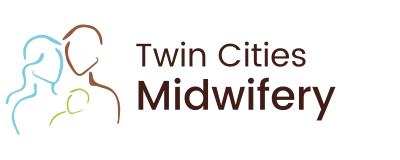



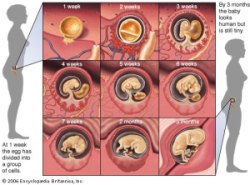
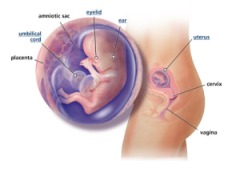
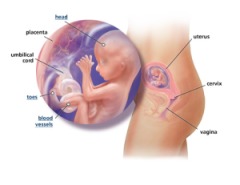

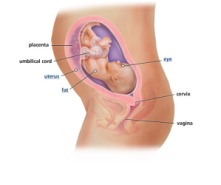

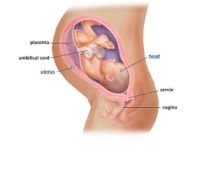
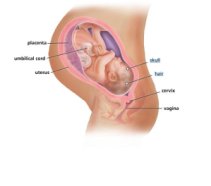
Sorry, the comment form is closed at this time.